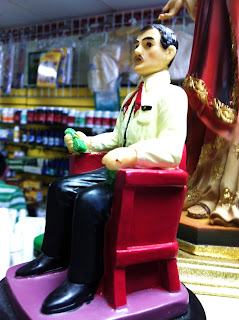When the Spanish conquered the Moorish kingdom of Granada, they discovered through one of those blessed accidents of humanity that from the sweet fermented juice of sugar cane one could obtain a dark and strong liquor. That was the birth of rum.
But the area’s weather conditions were not favorable for growing sugar cane, which is why the plantations were moved to the warm Caribbean after the voyages of discovery of Christopher Columbus. That was the true birthplace of rum, given that the Caribbean was and still is a sort of huge sugar cane factory.
Rum, a liquor with a high alcohol content, is obtained from the molasses of sugar cane, and through fermentation, distillation and aging in oak barrels. The liquor includes two major classifications: clear and light, typical of the Dominican Republic, Cuba and Puerto Rico, and dark and heavy – with more flavor – like that of Venezuela.
In fact, if a Venezuelan is asked what differentiates the rum of his South American country from that of other areas, it will be hard for him to be concise about those distinctions, according to the book, “Rum of Venezuela,” by Rosanna Di Turi.
According to her, Venezuelan rums have attributes that distinguish them from their counterparts in the world. However, there is an inescapable rule to aid one’s understanding: In Venezuela, to bring rum to its purest form, the alcohol distilled from the sugar cane must spend at least two years aging in oak barrels.
Food expert Alberto Soria is quoted in Di Turi’s book as saying that “this is the minimum aging for even the simplest rum. That aging in the Caribbean, for example, is six months in some places. Venezuela’s stocks of eight years or more are fragrant, mild, harmonious.”
Extreme weather conditions, typical of the tropical Caribbean, make the rum in oak barrels intensify in flavor, and that is why the rum on this side of the Atlantic is so sought after.
Consumed by itself or combined, dark or light, the rum is king of the Caribbean. ¡Salud!
Rum with a Hispanic touch
Cuba
Santiago de Cuba and the Havana Club are considered the best on the island, according to connoisseurs. “Cuban rums are fruity, but balanced and restrained,” says Roberto Pereira, author of “From Cuba: Tobacco, rum and danzón.”
Puerto Rico
The Caribbean island is the largest producer of rum in the world. The renowned brand Bacardí offers one of the most purchased clear and light rums.
Dominican Republic
Brugal rum, produced in Quisqueya since 1888, is considered one of the best in the world. “The aroma is unbeatable and its taste is both mild and firm,” says Carlos González-Brandt, a master rum maker and author of the book, “Rums of the World.”
Tidbits about rum
A Cuba libre is a very popular combination. It was created in 1898, during Cuba’s War of Independence. A group of former American soldiers, who had joined with Cuba against the Spanish, was in the Americano bar in Havana. A captain asked for Bacardí rum with a lot of ice and a few drops of lemon juice.
His great enjoyment of his beverage aroused the interest of the soldiers around him, so they asked to be served the same drink. It was an instant success.
When they asked for another round, a soldier proposed a toast to a “free Cuba – “por Cuba libre.” The captain raised his glass and the cries of the crowd were unanimous: “Cuba Libre”. The original Cuba Libre is composed of one part Bacardí, three parts Coca-Cola, ice and a slice of lemon.
The famous pirate Francis Drake created a combination of rum, sugar, lemon and mint, which bore his last name and which in turn was given the Spanish pronunciation of draque. Over time, this combination, but now with rum, became a mojito, which now is the cocktail that is most representative of rum drinks.
The daiquiri is another cocktail that went around the world, and of which writer Ernest Hemingway was a devoted fan. The orthodox recipe calls for mixing in a shaker a half a teaspoon of sugar, two tablespoons of lemon juice, a few drops of maraschino, a glass of white rum and plenty of ice.
Photos by Juan Miret







